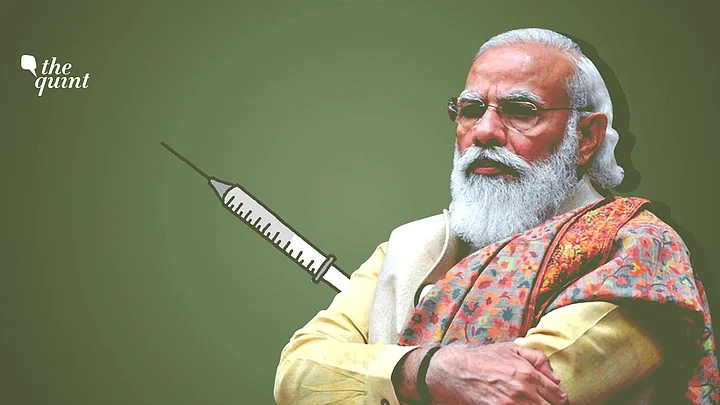The merry-go-round that is India's vaccination policy has completed full circle. Prime Minister Narendra Modi, in his address to the nation at 5 pm on 7 June, rolled back on the phase-3 vaccination strategy that came into effect a little over a month ago.
In a nutshell, the Center was taking back the reigns of procuring and distributing life-saving COVID vaccines from the states. He attributed this decision to the inability of the states to procure doses on their own.
Some questions we wish the Prime Minister had addressed as he took a u-turn:
In the absence of vaccines, how did the Center expect states to procure doses on its own?
Were any public health experts consulted before this policy was adopted? They would have told him the policy had inequity built-in.
Experts have been asking for one-nation-one-price-one-buyer policy. What was the thought behind dual-pricing, and the continued patronage of private hospitals?
What was the need to open up vaccines for all, when the most vulnerable remained at high risk? Those with chronic illness, mental health conditions, young diabetics, homeless, prisoners? The UK opened up vaccines for 30 plus only this week, six months after launching their vaccination drive.
What was done to boost manufacturing? Why were vaccine orders placed at a snail’s pace?
Why did it take over a year for the govt to realise they could tap into the potential of pharma PSUs to supplement vaccines?
Is health no longer a ‘state subject’, a spin floated by Union Ministers to defend the strategy?
Taking back control is okay, but how does the center plan to streamline vaccines for states that need it the most?
The world may want COWIN, but most Indian’s don’t have access. Should you not do away with technology barriers to vaccination?
From Masterstroke to Roll-Back: How Did We Come to This?
At the peak of the second surge in April, as Indians struggled to breathe, and expressed their frustration and anger on social media, the center decided to launch a vaccination master stroke. From May 1, the GoI's Liberalized and Accelerated Phase 3 Strategy of COVID-19 Vaccination would come into place.
These were the highlights:
Everyone above the age of 18 to be eligible to get vaccine against Covid-19
Vaccine manufacturers were empowered to release up to 50% of their supply to State Govts and in the open market at a pre-declared price
States empowered to procure additional vaccine doses directly from the manufacturers, as well as open up vaccination to any category of people above the age of 18
GoI vaccination drive would continue as before, providing free vaccination for essential and priority populations as defined earlier i.e HCWs, FLWs and population above 45 years
At the time of this shift, the country’s vaccination efforts were already floundering. From the peak vaccination of 44 lakh doses in the beginning of April, the daily vaccinations were in a freefall.
There was resentment building up among states that wanted a larger pie of the vaccines coming to them.
And vaccine supplies had dried up.
In this scenario, the GOI’s masterstroke was to say, ‘oh well, you asked for it, take it.’
As the Prime Minister said in his speech on Monday, 7 June, there was pressure being built, questions asked and demands being raised to the GOI, so the government, in its largesse, decided to listen to these voices and handed over the procurement of vaccines to the states.
There was only one problem with this strategy:
As someone who has been steering the country’s pandemic response, giving in to these so-called voices from the states sounded a lot like an abdication of responsibility.
Union Ministers followed suit, using the oft-repeated phrase – ‘Health is a state subject.’ While health is a state subject, the Constitution has envisaged “pandemic” as a specific issue, on which not just state governments, but even the Central government can legislate. Infact, on 24 March, 2020, under the National Disaster Management Act, the Union Health Ministry did just that right at the onset of the pandemic in India.
As was expected, with limited supplies with the Indian manufacturers of the two vaccines approved for use in India, states struggled to procure doses, even as the 9 big corporate hospitals grabbed 80 percent of their share of the pie.
Center’s free vaccines given for fixed categories of people ran out, and many states, unable to procure doses, were forced to shut down vaccination for the 18-44 group.
The bogey of each state floating its own ‘global tender’ to procure vaccines from outside the country was set up to fail.
(At The Quint, we question everything. Play an active role in shaping our journalism by becoming a member today.)
